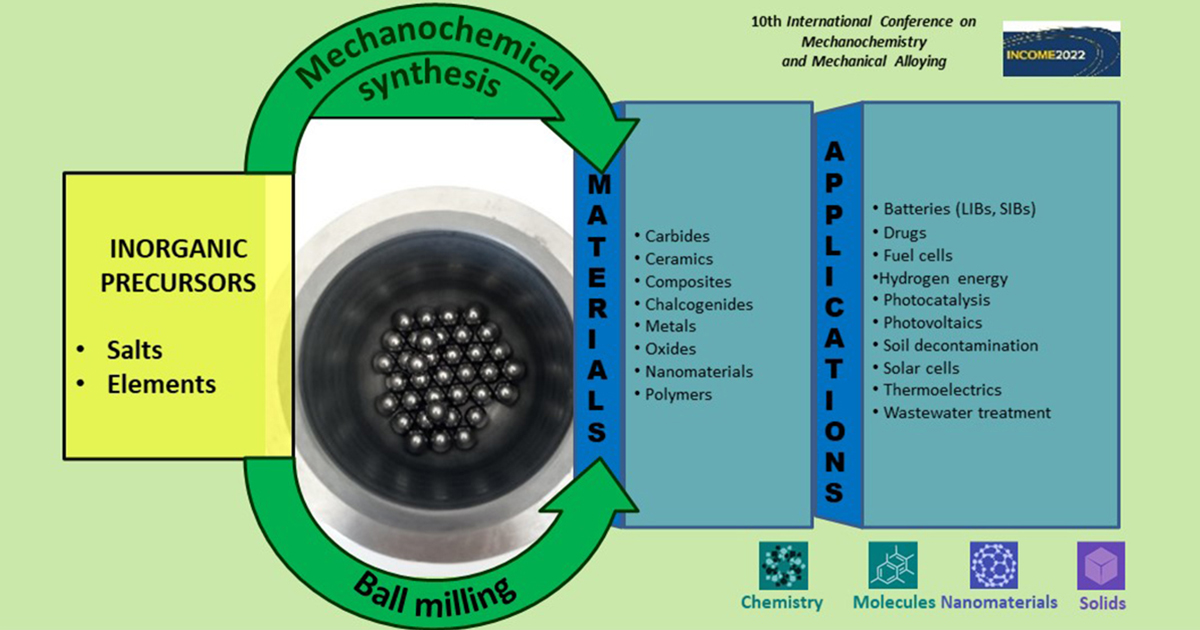Topic Menu
► Topic MenuTopic Editors



Advances in Inorganic Mechanochemistry for Applications in Materials Science

Topic Information
Dear Colleagues,
Mechanochemistry is currently experiencing a rapid development in the field of organic chemistry, as it was discovered that it is possible to prepare the desired products not accessible by traditional solution chemistry in the absence of solvents. However, mechanochemistry is also well applicable in the field of materials science, where the high-energy milling process is used either as a synthesis step to prepare inorganic nanomaterials applicable in advanced applications or to introduce defects or dopants into the crystalline structure, which can dramatically improve the application potential. The aim of the present Special Issue is to accommodate potential papers on the mechanochemical synthesis of inorganic materials (e.g., chalcogenides, oxides, carbides, hydrides, metallic nanoparticles) applicable in any field of materials science, where high-energy ball milling to prepare the desired materials and the application potential is clearly shown.
Related Conference: 10th International Conference on Mechanochemistry and Mechanical Alloying 2022 (INCOME2022)
Dr. Matej Baláž
Dr. Abhishek Lokhande
Dr. Marcela Achimovičová
Topic Editors
Keywords
- mechanochemistry
- high-energy ball milling
- nanomaterials
- inorganic materials
- applications
Participating Journals
| Journal Name | Impact Factor | CiteScore | Launched Year | First Decision (median) | APC |
|---|---|---|---|---|---|

Chemistry
|
2.4 | 3.9 | 2019 | 18.5 Days | CHF 1800 |

Molecules
|
4.6 | 8.6 | 1996 | 16.1 Days | CHF 2700 |

Nanomaterials
|
4.3 | 9.2 | 2010 | 15.4 Days | CHF 2400 |

Solids
|
2.4 | 4.5 | 2020 | 22.6 Days | CHF 1200 |

Preprints.org is a multidisciplinary platform offering a preprint service designed to facilitate the early sharing of your research. It supports and empowers your research journey from the very beginning.
MDPI Topics is collaborating with Preprints.org and has established a direct connection between MDPI journals and the platform. Authors are encouraged to take advantage of this opportunity by posting their preprints at Preprints.org prior to publication:
- Share your research immediately: disseminate your ideas prior to publication and establish priority for your work.
- Safeguard your intellectual contribution: Protect your ideas with a time-stamped preprint that serves as proof of your research timeline.
- Boost visibility and impact: Increase the reach and influence of your research by making it accessible to a global audience.
- Gain early feedback: Receive valuable input and insights from peers before submitting to a journal.
- Ensure broad indexing: Web of Science (Preprint Citation Index), Google Scholar, Crossref, SHARE, PrePubMed, Scilit and Europe PMC.

